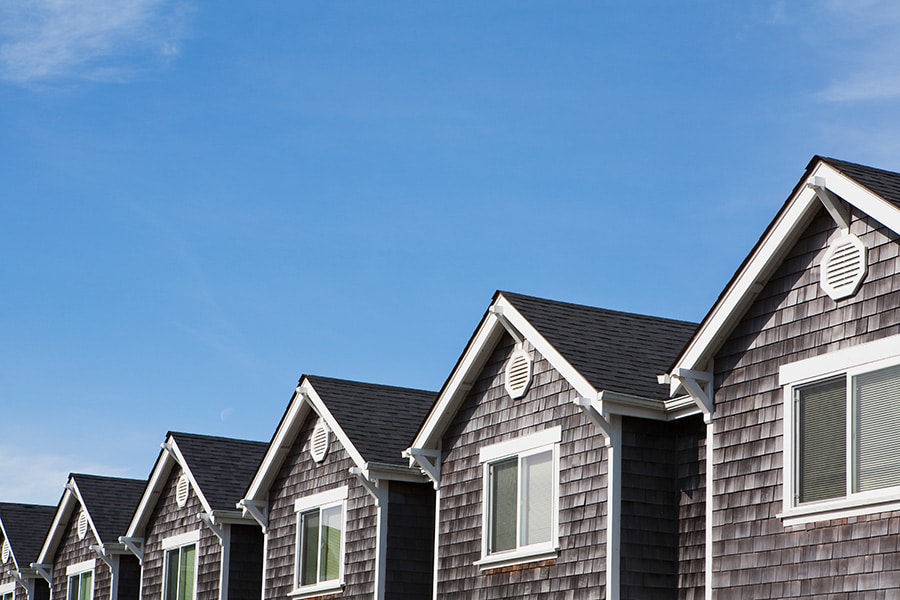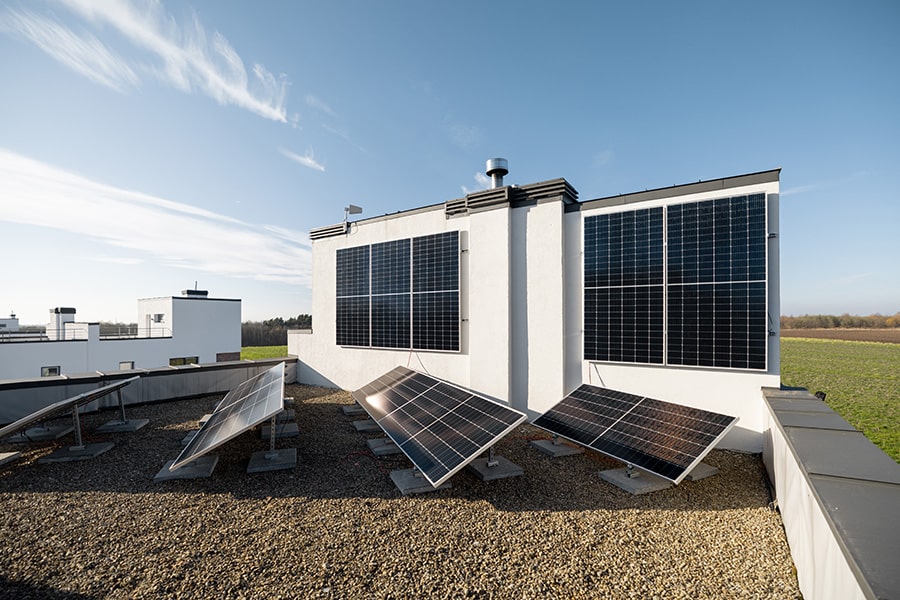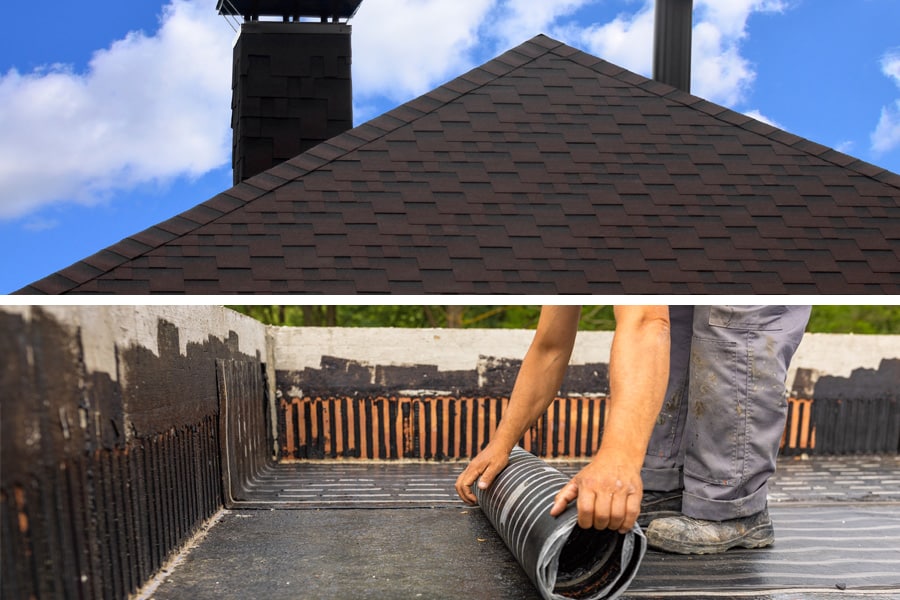When it comes to roofing, there are A LOT of terms that are often thrown around and used interchangeably. Two terms that are frequently interchanged and confusing to homeowners is the difference between a pitched roof and a flat roof. Though these two types of roofs have many similarities, there are several other differences that are worth noting.
If you are considering a new roof for your home, analyzing each type of roof and material is essential to make an informed decision. To help you discover whether a pitched or flat roof is best for you, we are going to discuss the primary differences between the two.
4 Differences Between A Pitched & Flat Roof
1. Aesthetics
Likely the most obvious difference between these two types of roofs is the aesthetic, or look that it gives off and adds to the home. A pitched roof is easily identified as it slopes downward in two different parts from a central ridge. Several different materials can be used for a pitched roof, such as shingles, tile, or metal. If you are considering a pitched roof, you will have several options to choose from and add a lot of character to your home.
On the other hand, a flat roof does not provide any options and typically does not add a lot of aesthetic to the home. A flat roof will be almost level, versus the sloped roof, and have a pitch of about 10 degrees. Because of the low slope, flat roofs are often used as additional recreational space for a home. While there are different material options for a flat roof, they are all typically darker in color and do not add a lot of character to the home.
2. Weather Resistance
Many consider a pitched roof to be more weather resistant than a flat roof. However, it truly depends on the climate in which you live, quality of installation, and available drainage system. If you live in an area that experiences high winds, a low profile roof is a better option over a pitched roof. Climates that see significant snowfall may consider a pitched roof over a flat one because the snow will be able to fall easier.
Having a professional roofer install your roof will help you be better prepared for weather resistance. Also, asking about their material choices and ensuring they make quality selections could save you significantly in the future. Be sure to discuss drainage systems as well to make sure water has a quick and direct way to move off of the roof. This could save your roof from easily developing a leak in the future.

3. Leak Potential
When reviewing the differences between a pitched and flat roof, it is imperative to discuss the leak potential of each type of roof. This is because water is the biggest threat to a roofing system and it causes significant damage not only to the roof, but everything below it. A pitched roof is considered “better” at diverting water away from the roofing system and at protecting the home. However, it is important to understand that a flat roof is exactly flat. They are typically designed with a slight slope to remove water from the roof.
So, while a pitched roof has a higher slope and will use more natural gravity to pull water away from the roofing system, both will utilize a drainage system. Having a professional roofer install the roof and drain system can help keep your home dry and further prevent leaks within your roofing system.
4. Energy Efficiency
A roof plays a large role in the efficiency of the other systems within a home, especially the HVAC systems. Roofing contractors use the term “R-Value” and it is in terms of the materials ability to resist thermal absorption. The higher the R-Value, the greater insulation offered by the material, which means the greater the energy efficiency.
A pitched roof typically has a lower R-Value than a flat roof. This is because there is less insulating properties within a pitched roofing system than that of a flat roof. We are not saying that a pitched roof is not energy efficient, it is just less than that of a flat roof. Additionally, a flat roof offers greater opportunity for solar panel installation which can further increase the “green” capacity of a home.

Which Is Best For Your Home?
This is a question only your local roofer can help answer for you. Like we said before, there are many factors that can contribute to what type of roof is best for your home. When discussing with a roofer, they will be able to take into account your local climate and specifics of your house. Also, look at what your home currently has for a roof. While it is not impossible to change the roof, it will likely cost you to do so.
If you are located in the East Valley, Arizona and in need of professional roofing services, Craven Construction is here for you! Our team is highly skilled and trained to review your roof and provide expert guidance to a new roof. Call our office today to schedule your FREE estimate!
Is Your Roof Ready For Replacement?
About Craven Construction
Craven Construction is dedicated to providing our customers with honest and reliable roofing services. With over two decades of residential and commercial experience, we are here to serve you and all of your roofing needs.
Our team of experienced roofers is licensed and knowledgeable in working with all types of roofing. We offer high quality roofing services and are capable of getting your project completed in a timely, efficient manner.

